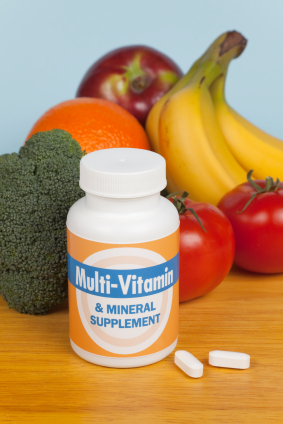The Different Forms of Vitamin E
The Different Forms of Vitamin E
By: Dr. George Obikoya
Vitamin E is a fat-soluble antioxidant vitamin that helps to neutralize potentially damaging free radicals in our body. It exists in eight different forms, alpha-tocopherol being the most active form of vitamin E in humans and a powerful biological antioxidant.
Each form has its own biological activity, the measure of potency or functional use in the body. The tocopherol and tocotrienol subfamilies are each composed of alpha, beta, gamma and delta vitamins having unique biological effects.
Vitamin E is thought to help in some skin conditions, male infertility, heart disease prevention, Alzheimer's disease, type 1 diabetes, circulatory problems, arthritis, premenstrual symptoms, and aging. It is also used as an antioxidant and to enhance immune system functioning in the elderly.
The tocopherols are a closely related group of biologically active compounds that vary only in number and position of methyl groups in the molecule; however, these structural differences influence the biological activity of the various molecules. (In other words, each type of vitamin e is similar, but work in slightly different ways).
The active tocopherols are named in order of their potency. Thus alpha-tocopherol is the most active. Some metabolites of alpha-tocopherol, for example, alpha-tocopherolquinone, and alphatocopheronolactone have activity in some mammals such as rats and rabbits although not in humans and these metabolites do not support all the functions attributed to vitamin E. In other words, stick with the tocopherols.
The vitamin E group also is necessary for normal mammal (including human) growth; without these tocopherols, our fertility is compromised and we may have children that develop abnormalities of the central nervous system, muscles, and organs, especially the liver.
Most of the stored vitamin E is found in body fat, although large amounts also occur in the uterus of females and the testis of males. The various forms of vitamin E are stored in tissues in different amounts; alpha-tocopherol is stored in higher concentrations than the other forms.
Many people don't know that there are several different forms of vitamin E. Why is this important to know? The different forms of vitamin E are truly disctinct and have different levels of effectiveness. Each form functions differently in the body and only one form truly represents natural vitamin E - the d-alpha-tocopoheryl form.
There are several distinct forms of vitamin E in dietary supplements vying for your attention. While tocotrienols, the form of vitamin E that features an unsaturated side chain, is becoming more popular, tocopherols (mainly alpha-tocopherol) still remain the most widely used and researched form. Tocopherol supplements usually feature either alpha-tocopherol, alpha-tocopheryl acetate or alpha-tocopheryl succinate, the latter two thought to confer enhanced stability.
You can get Vitamin E in synthetic form as dl-alpha tocopheryl. This is the cheapest and least effective form of vitamin E. The chemically produced dl-alpha-tocopher(y)l acetate or succinate, identified by the letter "l" after "d", was originally used as the industry standard for research. This was because it showed higher blood levels than the natural forms, alpha, beta, gamma and delta tocopherols, spelled with an "o" instead of a "y" to identify them as natural forms. Alpha-tocopherol can be derived from natural sources or can be synthetically produced. Natural-source alpha-tocopherol is a single stereoisomer and is also designated by the prefix "RRR." The synthetic form is a mixture of eight stereoisomers identified by the prefix "dl-" or "all-rac."
Natural-source d-alpha-tocopherol (as opposed to dl) has been shown to have a higher biopotency than the dl-rac form. The currently accepted ratio is 1.36:1 (d:dl). A recent proposal has been made to the National Academy of Sciences to change this biopotency factor to 2:1 based on the results of more recent research studies. But some researchers challenge this idea believing it is based on incomplete conclusions extrapolated from the studies.1
The fact that Vitamin E works at the mitochondrial rather than cellular level, and does not work at the blood level is proof that synthetic Vitamin E is an ineffective form. Furthermore, diabetics usually show high blood levels of Vitamin E because their heavily sclerosed circulatory system does not permit synthetic Vitamin E to reach the mitochondria level. Indeed, only natural form vitamin E has been discovered in brain tissue. Synthetic Vitamin E also causes side effects including heart palpitations even at relatively low dosage.
Esterified vitamin E is d-alpha tocopheryl. Originally alpha-tocopherol was erroneously thought to be the only active factor of the Vitamin E group: alpha, beta, delta, and gamma. We now know better. Alpha, beta, gamma, delta tocopherol, can all be esterified (converted) into a single acid ester.
However, esterified vitamin E is very resistant to destruction by oxidation even in the presence of minerals or at high temperatures but this destroys its antioxidant properties, although not its ability to prevent clot formation in our blood vessels. Mixed Tocopherols or d-alpha tocopherol are recommended for both vitamin E's antioxidant and anti-thrombotic effects.
A good multivitamin is the foundation of health and nutrition. Take a look at our scientific reviews of many of the popular brands for factors such as ingredients, areas of improvement, quality level, and overall value. If you are looking for a high quality liquid multivitamin, we suggest that you take a look at the Multivitamin Product Comparisons.
References
1. Hoppe PP, Krennrich G. Bioavailability and potency of natural-source
and all-racemic a-tocopherol in the human: a dispute. Euro J of
Nutr 2000;39:183-93.

